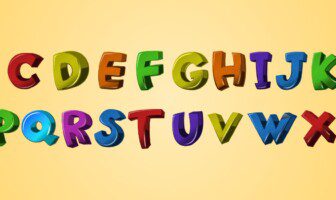
This is going to improve the relationship between the students and the educators. And present the educators with a comfortable platform where they can conveniently share their knowledge.
How To Improve Classroom Management ASAP
There is no secret formula or proprietary concoction of educational ingredients that make for the perfect learning environment. In fact, there’s no such thing as an ideal learning environment. There’s always going to be a unique blend of factors that play into creating a fruitful classroom. However, regardless of the circumstances, good classroom management will always prove to be a powerful asset.
Here are some suggestions for quickly improving classroom management in any situation:
1. Build Positive Relationships Early On
You can’t have good classroom management if you don’t have strong relationships with the students in your class – it’s as simple as that. And if there’s one key to building solid relationships, it’s to get started on day one.
“Build positive relationships with students and parents starting with the first day of school,” educator Lina Raffaelli writes. The profound educator clearly shares her opinion of letting students know the teachers and other students using a simple letters exchanging method.
Always start your good bond by sending the letters to the individual student’s house or start with formal phone calls.
You can’t make students love you. You can, however, show them that you care about them. If you do this from day one, you’ll have much greater control over your class. This is improving classroom management.
2. Be Clear With Expectations
Clarity about your instructions and expectations is helping you a lot to improve classroom management. Students can quickly become frustrated and disengaged when they’re unclear about expectations.
But if you’re able to set clear expectations upfront, you win the opportunity to bring them into the mission. It’s really as simple as that. Reduce confusion and promote clarity. If you do this, you’ll never “lose” your classroom.
3. Adapt To Student Learning Styles
As you should know, there are four basic learning styles: visual learning, auditory learning, reading/writing learning, and kinesthetic learning. For improving classroom management, you’re going to have students who fit into each of these buckets. And in many cases, individual students overlap styles.
If you’re only teaching your classroom using one or two of these styles, you’re missing the opportunity to fully engage your students. You must-have elements of all included in your teaching.
One of the most effective additions you can make is the integration of a classroom video recording system. With the right video solution in place, you can record every class session and permit students to access these recordings on-demand. This gives slower learners the ability to go back and review lectures after the fact (rather than having to slow down the entire class and trip up the other students who are tracking).
4. Never Embarrass
If you study teachers who consistently have excellent classroom management, you’ll find that they do an exceptional job of building trust with their students. And one of the keys to building and maintaining trust is to build students up (rather than tear them down).
One of the worst mistakes you can make as a teacher is to embarrass a student. When you embarrass a student, it makes them feel inadequate. It breaches any sense of trust that previously existed in your relationship and seriously hinders the student’s ability to learn in the future.
Should you embarrass a student (whether intentionally or unintentionally), you have to act quickly to repair the relationship. This means issuing an apology and re-investing in the relationship. If appropriate (and if it wouldn’t further embarrass the student), a public apology to the entire classroom may be in order.
5. Always Look For The Positive
It’s easy to immediately jump to negative conclusions when students are disengaged, disruptive, and/or don’t do their work. This works on the negative side of improving classroom management. However, as a rule of thumb, you should always look for the positive first for improving classroom management.
The latching onto the positives that a student brings to the table shows the student that you support them despite their imperfections. That goes a long way toward building trust and getting students to engage.
Sum It All Up
Improving classroom management produces a long list of benefits, including better engagement, more receptive attitudes, fewer distractions, and a healthy learning environment. Work on refining your own approach to classroom management in the coming weeks, and good things will happen.
Read Also:































